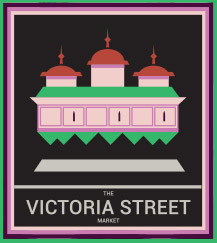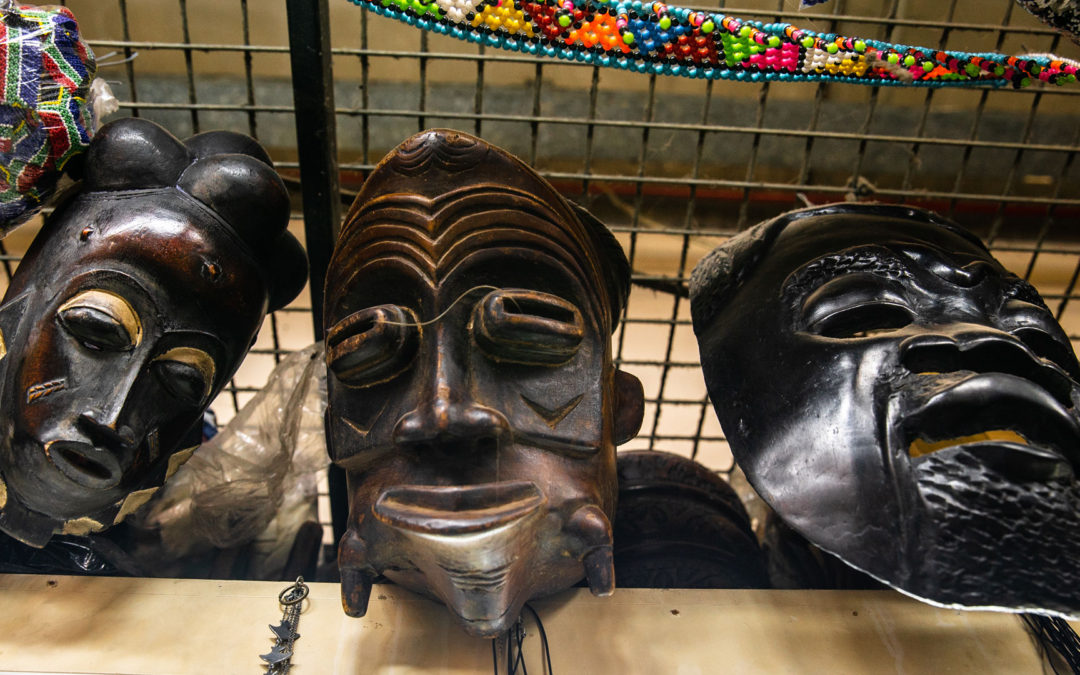
A ‘Melting Pot’ Of Colourful Culture
The scene of old Durban this week takes place in a 1950 picture of Durban’s Victoria Street Market, then known as the Indian Market, in Victoria street, now Bertha Mkhize Street. It was sent to us by correspondent Alan Gangasagar.
Frank Chemaly / Independent on Saturday
Alan Gangasagar said he couldn’t stand in Victoria Street itself because the road had changed. “I had to stand on the new bridge that flies over Victoria and Queen streets (today Denis Hurley Street). Both streets have been realigned,” he said.
Gangasagar said the old picture captured crucial elements that were integral in apartheid Durban. “The Victoria Street bridge in the center of the old picture provided pedestrian access across the railway line to the Grey Street complex and beyond.” The Emmanuel Cathedral dominates the skyline in the background in both pictures.
Gangasagar said that in the old picture, the bus rank for non-whites could be seen on Bertha Mkhize Street. This is no longer there. But it Brings back memories. “I was a weekend bus driver in my younger days, although I never had the opportunity to use that rank.”
Today’s Victoria Market is on the site of the original Indian Market built by the Durban Town Council in 1910 and gutted by fire in 1973.
Before 1910 it was an open air street market in Victoria Street, extending from Grey Street to Brooke Street and the corner of Cemetery Lane.
The original traders were Indian indentured labourers and market gardeners with about 2000 traders lining both ends of the streets with their carts, mainly selling vegetables. Traders would arrive each night at about 8pm and sleep under their carts so they were ready to trade at 4am the next day. Council regulations meant trading finished at 9am on weekdays and 10:30am on Saturdays. Thirty minutes later, a municipal water cart moved down the street to wash it down. It became known as the squatters market.
In 1910 the municipality allocated an area to house these traders and the Indian Market was born.
In the 1930s, a schism developed between the Hindu and Muslim farmers, and the Hindu group organised a market committee to meet the council to request a separate market. This resulted in the establishment of the Warwick early morning market in February 1934, while the original Indian Market became an outlet for more diversified goods. It was intended to provide for the needs of the Indian community but over the years it also attracted traders of other racial groups.
On Friday, March 16, 1973, a fire started at 8.45pm and destroyed the Indian Market. As the market burned, fireworks exploded in all directions and green flames from melting copper flared upwards. By 9.45pm the roof of the building collapsed. Two-thirds of the stalls between Cemetery Lane and Queen Street were destroyed. Hundreds of people faced unemployment, stallholders and workers could not afford to buy basic essentials and pay for rent, transport, furniture and many other expenses. Durban mayor Ron Williams launched a relief fund.
Traders were then relocated to the Bulk Sales Hall, alongside the African Market, until 1990 and the hall became known as the Durban Indian Market. This created a melting pt of cultures between Indian and African traders that quietly defied the apartheid regime’s policies of racial segregation.
The present-day Victoria Street Market was rebuilt on the site of original Indian Market and was reopened in July 1990 by Dr Anton Rupert, the chairman of the Small Business Development Corporation.
Today it is made up of small shops where traders sell a unique and vast range of gifts, decor and souvenirs from South Africa – celebrating a melting pot of cultures and diversity. Among the current traders are third and fourth generation descendants from the original street traders.









Recent Comments